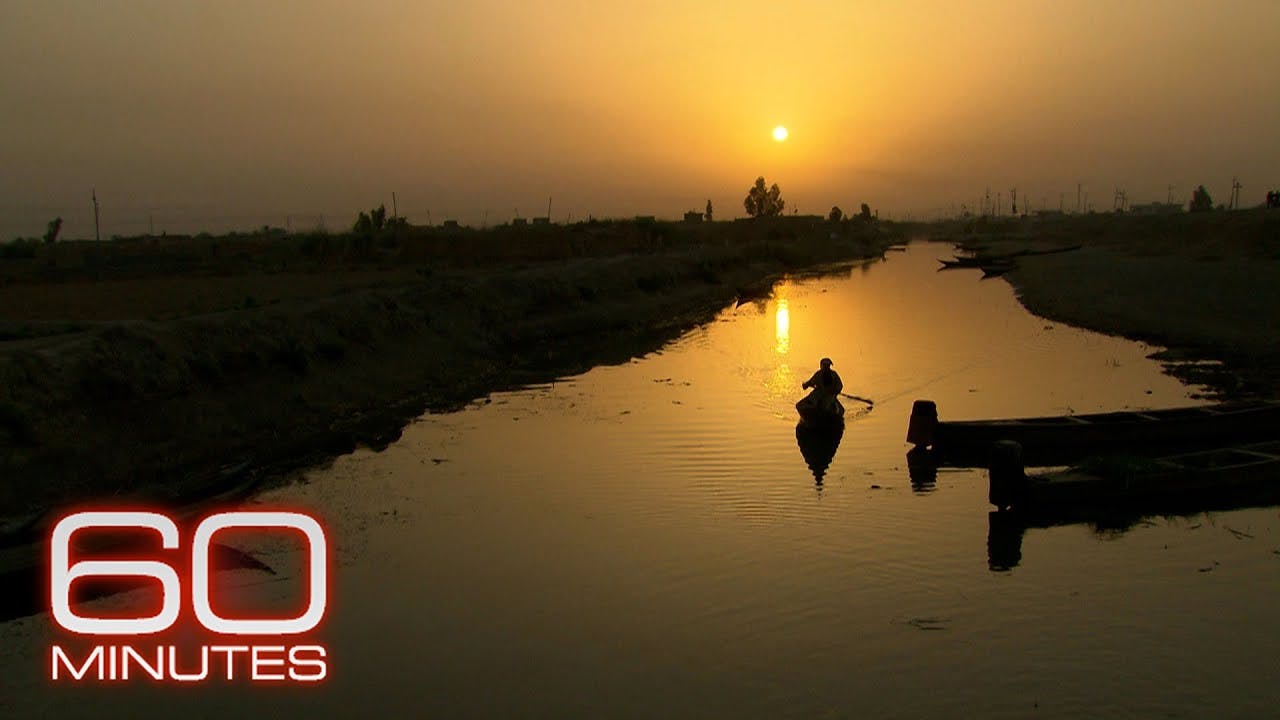World's Most Interesting Places: Vol. 2 | 60 Minutes Full Episodes
()

Resurrecting Eden (00:00:11)
- Saddam Hussein drained 90% of the Mesopotamian Marshes, known as the "cradle of civilization" and the "Garden of Eden," as a weapon of mass destruction against the Madan people after the Gulf War in 1991.
- The Madan people, who had lived in the marshes for centuries, were forced to flee their homes, resulting in the deaths of thousands and the displacement of over 100,000 Marsh Arabs.
- After Saddam's fall, efforts were made to restore the marshes, and with the help of an Italian security team and Iraqi police, approximately 30% of the marshes have been successfully reflooded.
- The Marsh Arabs have returned to their traditional way of life and the restoration of the marshes has also led to the return of wildlife, including birds and fish.
- Despite restoration efforts, the marshes will never fully return to their former state due to various factors such as dams diverting water, drought, and oil exploration.
Top of the World (00:12:30)
- The Peterman Glacier in Greenland is rapidly melting, receding 20 miles in just 5 years, and scientists are studying how the oceans interact with the ice, causing it to melt.
- A team led by geologists Sean Marot and Larry Mayer set up a camp on the glacier's edge to study its response to climate change and its potential impact on sea levels.
- Using sonar technology, they mapped the ocean floor, revealing skid marks that show how the glacier slid into the sea, and collected sediment cores containing clues about the glacier's past.
- The cores, studied by scientists worldwide, provide valuable information about the Earth's inner workings and past climate conditions.
- The scientists' work is crucial for understanding the potential impacts of climate change on glaciers and sea levels, which is essential for planning and infrastructure development in coastal areas.
- The Arctic climate is changing at an accelerating rate, resembling a "falling off a cliff" scenario, and more frequent monitoring is necessary to fully understand these changes.
The Library (00:25:28)
- The Vatican Library, founded over five centuries ago, houses a vast collection of historic treasures, including manuscripts, cookbooks, love letters, and artifacts spanning nearly 2,000 years.
- The library holds 2 million printed books, 80,000 handwritten manuscripts, thousands of prints, drawings, and ancient coins, and is closed to the public except for special occasions.
- The Great Hall serves as a picture gallery showcasing Saints, philosophers, and depictions of great libraries.
- The Pope is the only person authorized to remove books from the library.
- Writing on parchment was a laborious and costly process, with a single Bible requiring approximately 400 sheep to produce.
- Among the library's unique items are drawings of a German jousting tournament, an old cookbook, and love letters from King Henry VIII to Anne Boleyn, potentially stolen by a spy and brought to Rome.
- Henry VIII's pursuit of a divorce from Catherine of Aragon, denied by the church, led to his break with Rome, the establishment of the Church of England, and the conversion of England to Protestantism.
- During the Scientific Revolution, navigators mapped the world, and Galileo made groundbreaking astronomical observations, resulting in his branding as a heretic by the church for his heliocentric theory.
- Pope John Paul II apologized for the Galileo affair in 1992, while his successor, Benedict XVI, aimed to reconcile science and faith.
- Ongoing restoration efforts in the Vatican Library focus on preserving ancient documents, including letters from St. Peter and early copies of the New Testament written on papyrus.
- The Vatican Library's collection encapsulates the history of faith, human endeavors, and the passage of time in Rome.
Taking on the Eiger (00:37:45)
- JT Holmes, a professional skier, attempts a new and dangerous descent of the Eiger, a formidable mountain in the Swiss Alps, combining speed riding, cliff skiing, and freefalling.
- JT meticulously plans his descent with the help of an experienced mountain guide, Martin Sherman, ensuring every detail is accounted for to minimize risk.
- Despite unfavorable weather conditions, JT and his team seize the opportunity when the weather clears and take a helicopter to the Eiger summit.
- JT launches off the summit, utilizing a speedwing to fly over rocky outcrops and steep slopes before landing and continuing on skis.
- The most dangerous part of the descent involves a double backflip, releasing his skis, and free-falling nearly 2,000 feet before deploying his parachute.
- After a successful landing, JT, filled with exhilaration, decides to repeat the entire descent once again.
- JT encounters trouble when one of his skis gets stuck, reminiscent of a fatal incident that claimed the life of his friend Shane Makoni, but manages to free his ski and complete the descent.
- JT clarifies that he is not an adrenaline junkie but rather an adrenaline enthusiast who genuinely enjoys the thrill of high-risk activities.